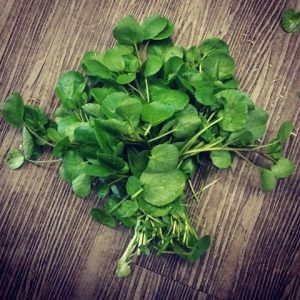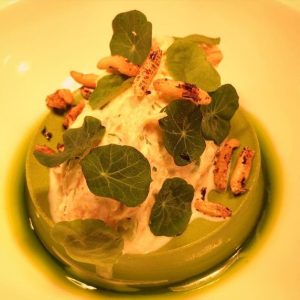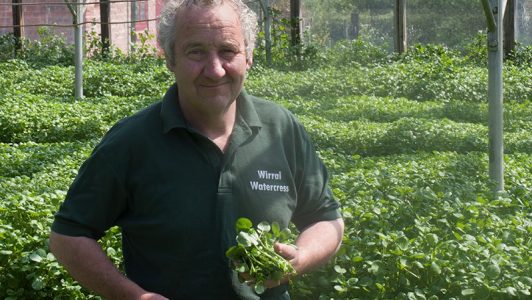Why (Wirral) Watercress? – Taste Cheshire Superstars #Meet the Team
Victoria Hayes
25th March 2020

 Some of us may be sat on our sofas enjoying a box set or twelve… while some key members of our food chain are working as hard as ever to provide us with what we need.
Some of us may be sat on our sofas enjoying a box set or twelve… while some key members of our food chain are working as hard as ever to provide us with what we need.
Today’s Taste Cheshire Superstars are the team at Wirral Watercress who are keenly harvesting the first of this seasons’ watercress in hope of a sunnier future!
Watercress is an often-overlooked leafy green that packs a powerful nutrient punch. It’s small, round leaves and edible stems have a peppery, slightly spicy flavour. Watercress is part of the family of vegetables, which also includes kale, Brussels sprouts and cabbage. It was once considered a weed, and it was first cultivated in the UK in the early 1800s.
Wirral Watercress admit they have been hit hard by the closure of the restaurants and the loss of those orders, but they are keen to remind us of the health benefits of their favourite green leaf as they continue to supply local greengrocers and wholesalers. You may find their goodies in a veg box if you order from a lovely local shop.
So why is Watercress considered so healthy?
Watercress is low in calories but packs in a vast array of nutrients.
Just 34 grams of watercress provides over 100% of the RDI for Vitamin K, a fat-soluble vitamin necessary for blood clotting and healthy bones.
It’s also packed with
- Vitamin A: 22% of the Reference Daily Intake (RDI)
- Vitamin C: 24% of the RDI
- Calcium: 4% of the RDI
- Manganese: 4% of the RDI
- Watercress also contains small amounts of vitamin E, thiamine, riboflavin, vitamin B6, folate, pantothenic acid, magnesium, phosphorus, potassium, sodium and copper
Watercress contains 15 mg of vitamin C per 34 grams, which is 20% of the RDI for women and 17% for men. Vitamin C is renowned for its beneficial effects on immune health. Deficiencies have been linked to decreased immune function and increased inflammation. Vitamin C boosts your immune system by increasing the production of white blood cells that fight infections.
Something I think we can all agree is pretty important, especially now. Thanks to the team at Wirral Watercress we can get snack all of these health benefits from a little bunch of leaves.
So what can you do with it?
Watercress can be used in a wide variety of dishes. However, to get the most benefits from its active antioxidant compounds, it’s best eaten raw or lightly steamed.
 Here are some easy ways to add watercress to your diet:
Here are some easy ways to add watercress to your diet:
- Sprinkle it on your salad.
- Stir it into your soup near the end of cooking.
- Use it to replace lettuce in a sandwich.
- Turn it into pesto by blending it with garlic and olive oil.
- Serve it with eggs.
- Use it to top any dish.
Today’s Taste Cheshire hat tip goes to Wirral Watercress’ Dave Arrowsmith. He’s a local Chester lad and he never fails to turn up for work, no matter what the weather may be! Dave has been with Wirral Watercress for 5 years after losing his job due to a work injury that nearly killed him! He is a real food hero.
He is busy cropping the Watercress and planting salad leaves for the new season.
You can help Wirral Watercress and yourself by asking your greengrocer to add it to your veg box or grocery list.
Wirral Watercress

Wirral Watercress provides watercress and other speciality crops to restaurants and greengrocers across the North.
More information